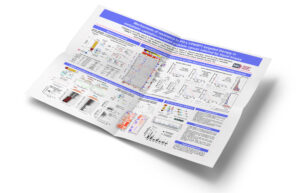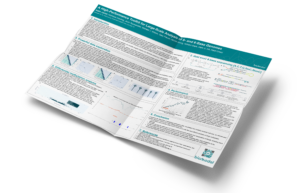John McShane recently joined biomodal as our Director of Business Development for Eastern North America and Canada.
We caught up with John to learn about his love for molecular biology, his scientific background in genomics, and what excites him about the field of epigenetics.
We also asked him about the challenges the field is facing and how simultaneous interrogation of genetic and epigenetic sequences could help overcome them.
1. Tell us about you and what excites you about the field.
I’m really driven by meeting new people and learning about their scientific initiatives. It’s my passion to work with cutting-edge technology and connect with researchers to help bring their innovations and discoveries to fruition.
It’s these interests that led me to realise early on that I liked connecting with people and talking about science a lot. So after 12 years of doing research in the lab, I transitioned into commercial and business development.
The new role allowed me to still be involved with awesome technology and science by putting the products in the right hands to carry out the research.
2. What excited you most when joining biomodal?
I joined biomodal organically; I read the article Simultaneous sequencing of genetic and epigenetic bases in DNA, published by Nature Biotechnology, and got very excited.
Methylation has been the gold standard for epigenetics for a long time but there has been a lack of innovation in the profiling field.
When I read the Nature Biotechnology article and learned that you can generate genomic data and methylation data simultaneously, it was a game-changer.
This method gives scientists more confidence in their research by enabling a multimodal readout of data. This allows them to gain insights from a different perspective and understand what is actually going on from a biological context.
Additionally, researchers are often faced with deriving multimodal insights from smaller and smaller sample amounts. This was extraordinarily complex with methylation until biomodal introduced duet multiomics which can utilise a DNA sample as low as 10ng.
This opens up the potential for applications like liquid biopsy and the insights that can originate from cell-free DNA.
It’s going to be a paradigm shift for early cancer detection, diagnostics, drug discovery, and precision medicine. Allowing researchers to use small sample sizes and still generate deep expansive data is a very powerful concept.
3. What are the biggest challenges or barriers facing clinicians and scientists, and how could simultaneous multiomic interrogation of samples overcome them?
One of the problems is that scientists are commonly split up when studying epigenomics or genomics. However, the walls of the different “omic” backgrounds are diminishing.
These modalities all interact together, so being able to interrogate genetics and epigenetics together, provides a powerful context for discovering new targets for drugs and discovering new underlying mechanisms for disease.
duet multiomics is going to be a powerful tool for new companies, academic researchers, and for established diagnostics providers.
This solution breaks down the silos, providing more in-depth information, helping researchers’ efforts in early disease detection, risk stratification and disease monitoring.
If you’re based in North America on the East Coast, and you’d like to learn more about duet multiomics solution +modC and how it could transform your research, reach out to John.


